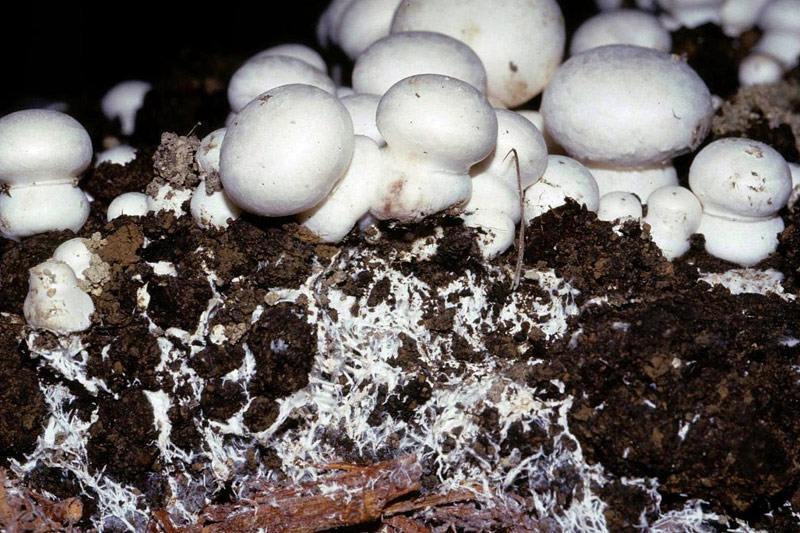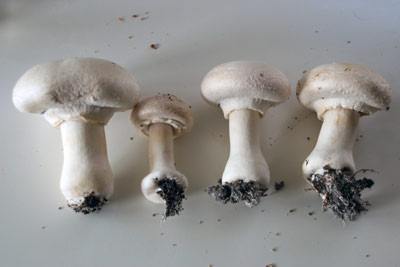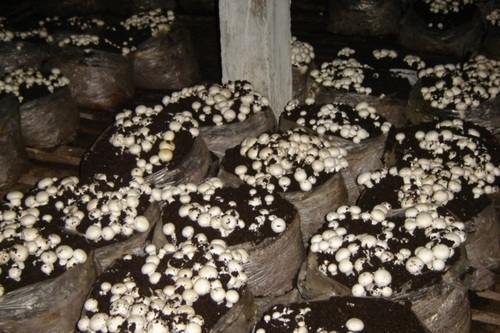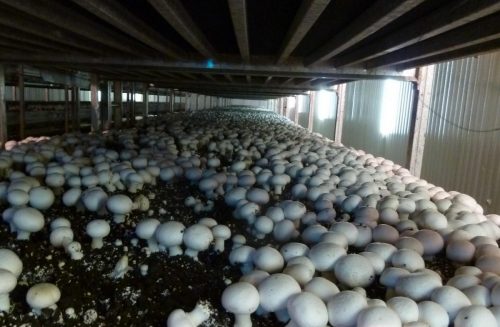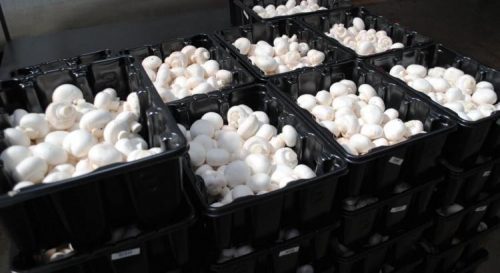Champignon mushrooms, information about cultivation technology
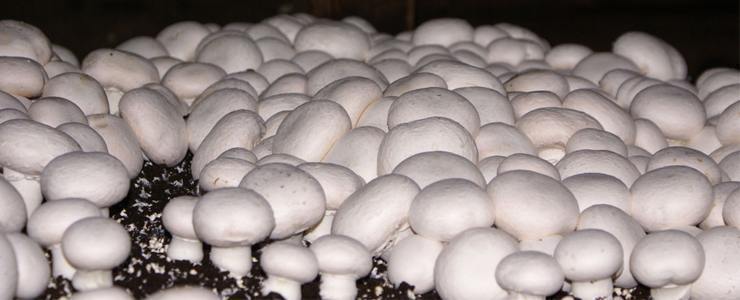
Champignon (Button mushroom) – Agaricus bisporus
Origin and spread
There are controversies about the origin of mushrooms, some authors claim that Italy is the country of origin, and others claim that it would be France.
In some countries, after the Second World War, the culture of edible mushrooms was modernized, using intensive technologies, constituting a real industry. About 3,000 species of mushrooms are currently known in the world, of which over 50 are toxic. Some species of mushrooms are cultivated in directed cultivation, either in a household system or in an intensive industrial system, Agaricus bisporus being the most important species.
Botanical particularities
Mushrooms as organisms located between the animal kingdom and that of autotrophic plants, have a vegetative apparatus devoid of leaves, stem, and root, constituting an agglomeration of very fine mycelial filaments, called hyphae.
Champignon mushroom consists of two distinct parts: an underground one, called mycelium, and an aerial one, called carpophore. The vegetative part of the fungus is represented by mycelium. It consists of a braid of mycelial hyphae, cylindrical in shape, and divided into cells by transverse walls. The role of the mycelium is to feed the carpophore, which arises from small bumps-primordia, which form at the extremity of the youngest hyphae. Champignon mushroom forms a convex or flattened cap, covered with a white, cream, or brown cuticle. The white stem is 3-5 cm long and 1-2 cm in diameter.
Ecological requirements
As edible mushrooms are heterotrophic, they must find the necessary nutrients in the culture medium, especially carbohydrates (cellulose being the most important), macro and microelements. Nitrogen is used by mushrooms in the organic form of amino acids and peptides.
The culture substrate is one of the decisive factors in the success of a culture. It must be suitable for the enzymatic possibilities and the energy and nutrient requirements of the mushrooms.
Microclimate factors
Edible mushrooms have a low degree of structural and functional differentiation, which greatly reduces their resistance to adverse environmental conditions.
Correct management of microclimate factors specific to each stage of the growing cycle of the different mushroom species is of utmost importance.
Light is a necessity for most species, except for Agaricus mushrooms. In the absence of light, primordia do not develop or show abnormal growth (strong elongation of the leg and reduction in the size of the pallium, until it disappears).
Combined with insufficient ventilation, the lack of light causes a cauliflower appearance of the pallium. In order to provide the diffuse light required by the champignon mushrooms, it is recommended to apply on the outside of the glasshouse a mixed micronized calcium carbonate lime. White, bluish and ultraviolet light is very favourable, while red and yellow light inhibits carpophore development.
Temperature. Deviation below or above the optimum leads to slower carpophore growth or abnormal carpophore development through accelerated perspiration.
The relative air humidity must be higher than 75%, but must not reach the saturation point of 100% (dew point), as this inhibits the metabolism of champignon mushrooms and favours the appearance of competitors.
Ventilation. The concentration of 0.03% CO2 is favourable while exceeding 1% influences the strong elongation of the leg.
Technological cultivation systems
Classic system
It is the oldest cultivation system, can be done in any type of location, requires a minimum of conditions for the growth and development of mushrooms.
This system is no longer used because of its poor economic efficiency (high compost consumption and low yield). It is unreliable in production due to a lack of disease and pest control possibilities.
Semi-intensive system
It is a technologically evolved cultivation system. In the growing room, there are provided heating, ventilation, pasteurization, and thermal disinfection conditions.
Specially built or adapted growing rooms can be used, equipped with pasteurization, thermal disinfection, and ventilation facilities.
Industrial system (intensive)
It requires specially designed growing rooms with automatic regulation of temperature (heating-cooling), humidity and ventilation and with total mechanization of the growing work.
It is applied on large areas, in 4-6 cultivation cycles/year, giving the highest mushroom yields/m²/cycle and the highest annual yields.
Champignon mushroom harvesting and crop maintenance during harvest time
The quality and value of mushrooms are directly influenced by the correct timing of harvesting. After a period of 18-21 days from the covering of the culture substrate, the first fruiting bodies appear in the form of individual mushrooms.
The appearance of the velum determines the time of harvesting. Mushrooms must be harvested with the velum intact, the cap closed and the stem slightly elongated.
During a fruiting period, 20-40 harvests should be carried out, grouped in 3-8 harvesting waves, depending on the ambient temperature.
The interval between harvests depends on the temperature as follows: at 12-13ºC harvests are done every 2-3 days, at 14-15ºC every 1-2 days, at 16-18ºC harvests are done daily.
For harvesting, the mushrooms are grasped by the base of the stalk with the hand, twisted, and gently pressed downwards. Mushrooms that appear in bunches are harvested in stages by detaching them from the bunch. Using a stainless steel knife, cut off the base of the stalk and sort by commercial quality.
For fresh consumption, the mushrooms are packed in perforated polythene bags, in cardboard or plastic boxes, divided and perforated.
Storage
After harvesting, the mushrooms can be stored in cold storage for 24-48 hours at 2-4 ºC. Mushrooms are transported over long distances by isothermal machines at 3-4 ºC. In their preserved form in tin cans or plastic barrels in brine, mushrooms have a shelf life of 1-2 weeks.
Care work during the harvest period is mandatory and concerns the removal of diseased or stained mushrooms. In the case of mushrooms that have appeared in bunches, the mycelial postemergence is removed and additional covering (mulch) is applied after each harvest wave.














































































































































































































































































































































































































































